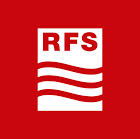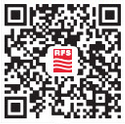Delivering communications in extreme conditions
Change is coming
Only this month scientists have made it clear that the tipping point for the earth when it comes to climate change is closer than we think and more needs to be done to address it. Although many countries are uniting to limit climate change, current policies place us on a trajectory towards 2.9ºC of global heating. It is becoming apparent that even a change of 1.5ºC will have an impact that will be felt more profoundly than anything we have felt before. A key feature of the impact of global warming we will see is more volatility in climates; more extremes, hotter summers, and fiercely colder winters.
The change in weather will impact virtually every aspect of life, and this does extend to telecoms. Existing infrastructure has a certain element of hardiness but the telecoms equipment of the future needs to be significantly more robust to withstand the extremes of a changing planet.
Making a difference
For telecoms industry, there are several opportunities to make a profound difference to the climate change crisis – both to slow the impact and to cope with the current challenges. At RFS we are committed to reducing our own carbon footprint with the 1.5°C Climate Ambition project. This means streamlining and improving the efficiency of our manufacturing processes, working with suppliers that are similarly committed to limiting the impact of climate change, and encouraging our employees to think and act ‘green.’ The telecoms industry, particularly from a hardware perspective has the scope to make a real impact by taking similar steps and we hope that as an industry we can set an example of what can be achieved.
Secondly, as well as looking to the future, we have to deal with the here and now and that means ensuring that there is equipment that is capable of functioning in increasingly extreme conditions. At RFS we are already developing solutions that are capable of withstanding the elements. This ranges from our high wind, high ice base station and microwave solutions which are a tried and tested success with operators, including multiple tier 1 providers. They can be configured to withstand up to 2 inches of ice and wind speeds of up to 155mph without impacting performance, ensuring continuity of connectivity even in the event of extreme weather. These solutions complement innovation being made within other business units, to develop equipment to withstand higher windspeeds and greater climate fluctuation than ever before.
Additionally, our unique Dragonskin cable is designed to continue to function without issue in the event of a fire, continuing to perform even when heated to 1000ºC for up to 2 hours. This allows communication to continue and ensure safety even if the worst were to happen.
Conclusion
Ultimately it has never been more critical for the telecoms industry to truly understand the world in which we live and create solutions in a way that both preserves it, and serves the most pressing environmental challenges we have ever seen. The next few years will be absolutely critical when it comes to addressing global warming and we are keen to play our part in making changes that have a positive impact on the trajectory of the planet’s climate.
If you would like to hear more about both RFS’s climate ambition contact Neil Gibson, 1.5°C Climate Ambition Project Manager, or the solutions developed to deal with extreme weather, contact Jean-Pierre Harel, Head of Research for MSS.


